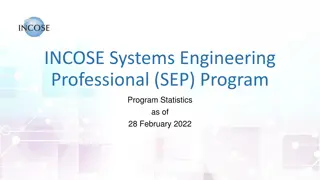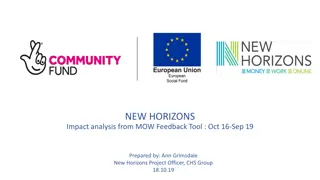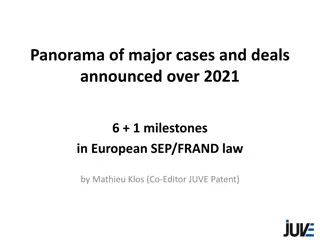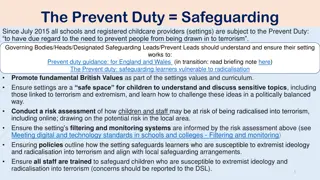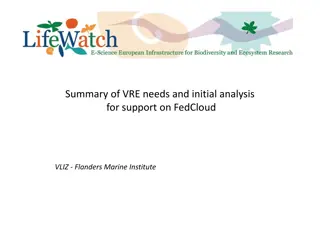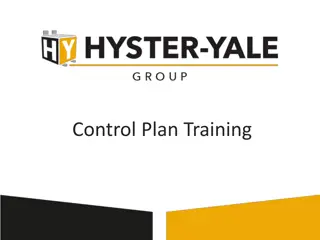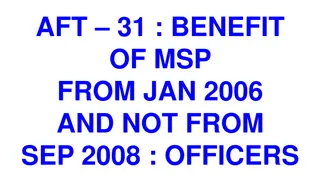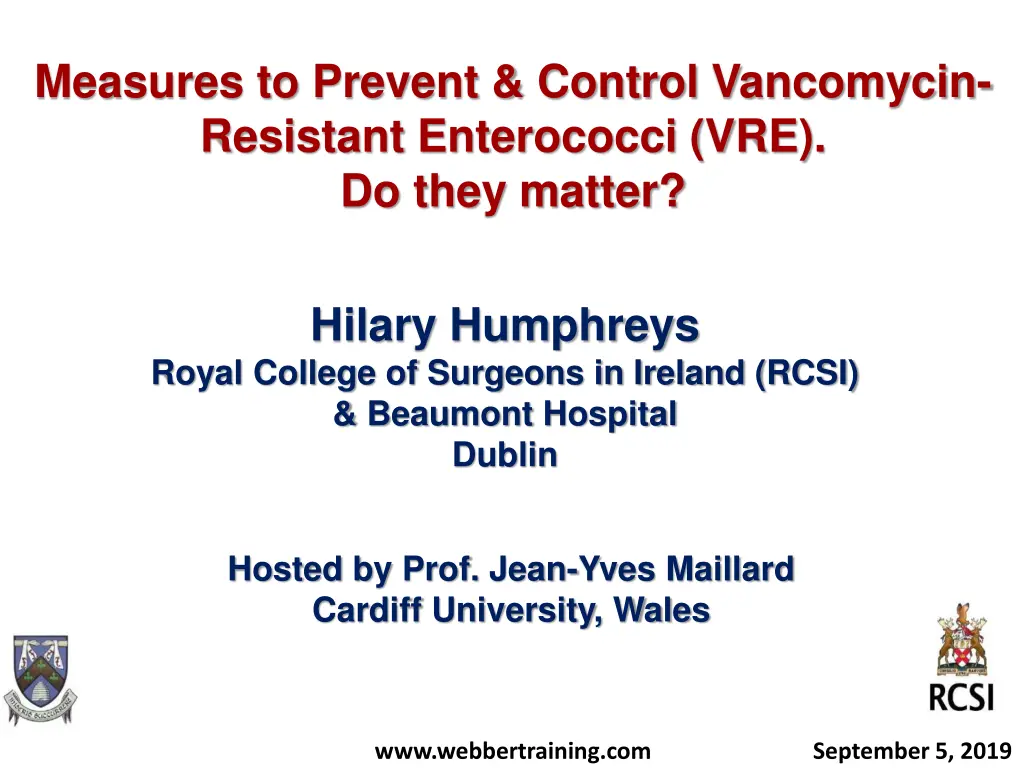
Preventing and Controlling Vancomycin-Resistant Enterococci (VRE) Spread
Understand the measures to prevent and control the spread of Vancomycin-Resistant Enterococci (VRE), including the clinical importance, impact, and environmental contamination. Explore the arguments for and against maintaining contact precautions as a preventive measure. Gain insights into the significance of VRE infections, their impact on healthcare, and the importance of surveillance.
Download Presentation

Please find below an Image/Link to download the presentation.
The content on the website is provided AS IS for your information and personal use only. It may not be sold, licensed, or shared on other websites without obtaining consent from the author. If you encounter any issues during the download, it is possible that the publisher has removed the file from their server.
You are allowed to download the files provided on this website for personal or commercial use, subject to the condition that they are used lawfully. All files are the property of their respective owners.
The content on the website is provided AS IS for your information and personal use only. It may not be sold, licensed, or shared on other websites without obtaining consent from the author.
E N D
Presentation Transcript
Measures to Prevent & Control Vancomycin- Resistant Enterococci (VRE). Do they matter? Hilary Humphreys Royal College of Surgeons in Ireland (RCSI) & Beaumont Hospital Dublin Hosted by Prof. Jean-Yves Maillard Cardiff University, Wales www.webbertraining.com September 5, 2019
Declarations The views expressed are in a professional but personal context & are not necessarily those of the RCSI & Beaumont Hospital, Dublin. I have recently received research funding from Pfizer & Astellas. I have also provided professional advice to Pfizer 2
Objectives A. To be fully appraised on the current understanding of the clinical importance of VRE B. To be fully cognizant of the significance of environmental contamination in the spread of VRE C. To understand the arguments for & against maintaining contact precautions as a VRE prevention & control measure 3
Outline Introductory Remarks Clinical Importance -Impact -Costs Surveillance, Contact Precautions & VRE -For & Against Environmental Contamination Conclusions 4
Introductory Comments 5
Enterococci Previously, faecal streptococci Normal inhabitants of the gut & genitourinary tract Low grade pathogens, less virulent than Staph. aureus Commonest species are Enterococcus faecalis, E. faecium (EFm) 6
Infections Caused by Enterococci Urinary tract Bloodstream infection (BSI) Endocarditis Device-associated Peritonitis Surgical Peritoneal dialysis 7
Impact - Overview A.Enterococci are the 2nd most common cause of healthcare-acquired infections (HCAI) in the USA after S. aureus & 89% of E. faecium associated with central-line- associated BSI are VRE Infect Control Hosp Epidemiol, 2013 B. VRE are bacteria of serious concern which require prompt & substantial action CDC, 2013 8
Clinical Importance 9
VRE BSI & Ireland Ireland & Europe VREFm BSI EARS-Net & Health Protection Surveillance Centre (Ireland) 10
Why the higher rates in Ireland? Dominant & widespread clones different to elsewhere? Antibiotic use? Animal-human antibiotic chain? Greater patient vulnerability? Inadequate facilities & health resources? 11
VRE BSI in Tertiary Care Hospital 1. 2. 3. 4. 75 patients, minimal intra-abdominal source 52% vanA Clonal relatedness with environmental isolates Similar sequence types & virulence factors to those in Europe High EFm in Ireland? 5. J Antimicrob Chemother 2015; 70: 2718-2721 12
Fluctuating levels of VRE, with a decrease in the early-to-mid 2000s Was this due to: Active surveillance Electronic alerts Improved standard precautions/hand hygiene External audits Antimicrobial stewardship 13
VRE Local Experiences Endemic VRE ICU screening & all clinical isolates checked Inadequate numbers of single rooms 2007 2008 2006 J Hosp Infect 2010: 75: 228-233 14
VRE Clinical Impact 2001 2003 2005 2007 2008 No. of screens 1344 1525 1121 1288 1220 + ves 42 63 94 75 92 +ves/10,000 bed days (BD) 1.96 2.94 4.06 3.18 3.85 +ve blood cultures 2 11 18 8 11 VRE BSI/10,000 BD 0.09 0.51 0.78 0.34 0.46 J Hosp Infect 2010; 75: 228-233 15
VRE versus VSE Bloodstream Infection (BSI) Is VRE BSI worse than vancomycin- susceptible BSI in terms of outcome? Systematic review; 12 cohort studies & 1 case- control Infect Control Hosp Epidemiol 2016; 37: 26-35 16
VRE versus VSE BSI Infect Control Hosp Epidemiol 2016; 37: 26-35 17
VRE & Renal Dialysis Patients Meta-analysis from 1982-2014 of prevalence, risk factors & significance 23 studies from 100 dialysis centres involving 4,842 patients Prevalence, 6.2% (5.2% North America) Risk of infection increases x 21.6 if VRE +ve Heterogeneity may reflect differences in infection prevention & control practices & use of antibiotics Am J Kidney Dis 2015; 65: 88-97 18
How much does VRE cost us? Retrospective case-control study, 2005-2008 (inclusive) in 1520-bed German hospital VRE versus VSE infections (42:42) VRE VSE p value Cost/patient 0.03 57,675 38,344 Costs before infection 0.34 17,893 16,600 Costs after infection 0.049 37,971 23,025 Antimicrobial Resist & Infect Control 2018 19
How much does VRE cost us? Antimicrobial Resist & Infect Control 2018 20
Surveillance, Contact Precautions & VRE 21
How do you prioritise measures to prevent & control a particular HCAI? Prevalence common or less common Impact virulent or less virulent Treatment some or few options Visibility seen or not seen to be important 22
Priorities in HCAI Prevention & Control Personal Perspective Carbapenemase producing Enterobacterales (CPE) Clostridioides difficile infection (CDI) Methicillin-resistant Staphylococcus aureus (MRSA) Vancomycin-resistant enterococci (VRE) Extended spectrum -lactamase producers (ESBL) Others, antibiotic susceptible bacteria, norovirus, etc 23
Risk Factors for VRE Intrinsic Comment Immunosuppression Haematology/Oncology, SOT Renal dialysis Healthcare contact Antibiotics 3GC, FQ, vanc, B-L/B-L inhibitors Underlying diseases Healthcare contact Extrinsic Comment ICU LTCF Most studies ? Underlying disease or lack of prevention Inadequate cleaning Single room Prior hospitalisation Studies in tertiary centres 24 J Hosp Infect 2014; 88: 191-198
Control & Prevention of VRE Surveillance +/- screening Standard precautions Contact precautions 25
Control of VRE - Outbreak 2004-2010 - 45 outbreaks involving 533 cases in France Control involved three periods & numbers fell Similar approach for CPE Euro Surveill 2012; 17 (30) Observed Predicted 26
Surveillance for VRE Passive Only check isolates causing infection to guide therapy Occasional prevalence surveys of enterococcal isolates Active Selective, e.g. admission & weekly in ICU Universal, all patients in certain clinical units on admission, weekly & on discharge 27
Studies on Screening Mixed & sub-optimal in large part due to Differences in centres Sampling & laboratory methodology Patient populations Design, retrospective, prospective, case-controlled Some are mathematical modelling Despite this, there is at least a suggestion that active screening reduces prevalence due to possible increased awareness, indirect measures +/- direct preventative measures 28
Examples of Screening/Interventions Setting/Design Screening Outcome Comments Japan, observational All hospital admissions Initial prevalence but then fell Improved hand hygiene US, retrospective BSI in 2 hospitals, one that screens Higher BSI rate & cohort in non- screening hospital Hospitals, similar but not controlled US, multicentre retrospective Admission & weekly ICU screen - detection US, oncology unit Historical controls Admission & weekly screening Reduced BSI rates & costs Single centre Europe 13 ICUs cluster randomised Frequent screening Improved hand hygiene & chlorhexidine bathing most important J Hosp Infect 2014; 88: 191-198 29 Some patients not screened
VRE Guidelines in USA, UK & Ireland USA, 2003, Infect Control Hosp Epidemiol 2003, 24: 362-386 UK, 2006, J Hosp Infect 2006; 62: 6-21 Ireland, 2014 Health Protection Surveillance Centre (www.hpsc.ie) 30
USA UK Ireland Surveillance Active for high risk patients Periodic Outbreaks only Admission & weekly for ICUs, etc. Previously known & transfers Contact Precautions Yes & single rooms Implied & single room on basis of risk assessment Yes & single rooms if possible 31
Passive or Active Surveillance Modelling based on data from Australia 6% & 22% detected by passive & active surveillance, respectively Ratio of transmission with contact precautions was 0.33 compared to without VRE acquisition mainly due to background acquisition & antimicrobial stewardship, cleaning & hand hygiene important BMC Infect Dis 2018; 18: 511 32
Phase 1 baseline data Phase 2 hand hygiene Phase 3- screening (molecular & culture) & if +ve, contact precautions 15-22% of patients in single rooms; more than % carriers 33
IP & C Measures Screening Costs Infection, Length of Stay, Antibiotics & Investigations 34
Trade Off in Costs Peri-rectal cultures taken 1 case of VRE BSI 19 days of hospitalisation 28 cases of VRE BSI $761,320 VRE IP&C measures $253,097 Infect Control Hosp Epidemiol 2002; 23: 429-435 35
What happens when you stop surveillance & contact precautions? Comparison of different time periods & effect on BSI But, single centre, malignant haematology patients, no details on hand hygiene & cleaning, & all admissions in single rooms Infect Control Hosp Epidemiol 2016; 37: 398-403 36
Contact Precautions, or Not For VRE Retrospective, before & after study in 800-bed Detroit Hospital Hand hygiene compliance was 73% & 78% Am J Infect Control; 2017: 1369-71 37
Environmental Contamination 38
VRE & Wastewater Isolates of E. faecalis & EFmsequenced from blood cultures & BSI in East of England 28 antibiotic resistant genes, 23 of which were in the hospital sewage, municipal waste & bloodstream Genome Research, 2019 39
Ongoing VRE in the ICU 12-bed ICU with 6 single rooms, 4 are sub-standard Patients screened on admission & weekly 157 patients, 19% VRE+ve & 107/1,647 (6.5%) of environmental sites +ve Infect Control Hosp Epidemiol 2018; 39: 40-45 40
Cleaning Bundle to Reduce HCAI 11 hospitals in Australia that used audit, feedback & was low cost Objective was to reduce Clostridioides difficile infection (CDI), Staphylococcus aureus BSI & enterococcal infection Cleaning improved but no fall in CDI or S. aureus BSI There was a statistically significant reduction in VRE infections (37%) Lancet Infect Dis 2019; 19: 410-418 41
Can we decolonise patients with VRE as with MRSA? Not specifically .. but there may be some possible options 42
Chlorhexidine Bathing Outside ICU 53 hospitals & >700,000 patients spread over 3 periods Primary outcome was unit-attributable MRSA or VRE 67% reduction in VRE+ve clinical cultures but no difference in BSI Lancet 2019; 393: 1205-15 43
Chlorhexidine Bathing & ICU Reduction in ESBL/VRE in environmental contamination despite increase in hand hygiene compliance (80-85%) Bed occupancy (98% to 110%) & reduction in patient stay Infect Control Hosp Epidemiol 2018; 39: 1131-1133 44
Decolonisation of VRE by Faecal Microbiota Transplant (FMT) FMT seeks to normalise the faecal flora (microbiota) & used to treat CDI Interest in using it to control CPE especially in advance of high risk procedures/events Case report of multiple VRE infections after heart & kidney transplant: donor was the spouse Open Forum Infect Dis, 2015 45
Bacteriophages & Antibiotics to Treat (Decolonise) VRE Mouse model of septic peritonitis with intra-peritoneal injections 100% survival if phages given 0-7h after inoculation Res Microbiol 2018; 169: 531-539 46
Conclusions 47
Horizontal measures to prevent & control HCAI (e.g. improved hygiene, chlorhexidine decolonisation) are not incompatible with targeted, focussed, vertical measures to prevent VRE (e.g. screening & possible decolonisation) 48
Conclusions 1. VRE remain important but profile overtaken by CDI, CPE, etc. 2. Passive surveillance underestimates prevalence 3. Contact precautions may not be necessary, if patients are in single rooms & there is high compliance with standard precautions 4. Horizontal IPC approaches, e.g. chlorhexidine bathing & improved environmental cleaning are important 5. FMT & phage therapy may in the future be appropriate, when decolonisation required in selected patients 49




